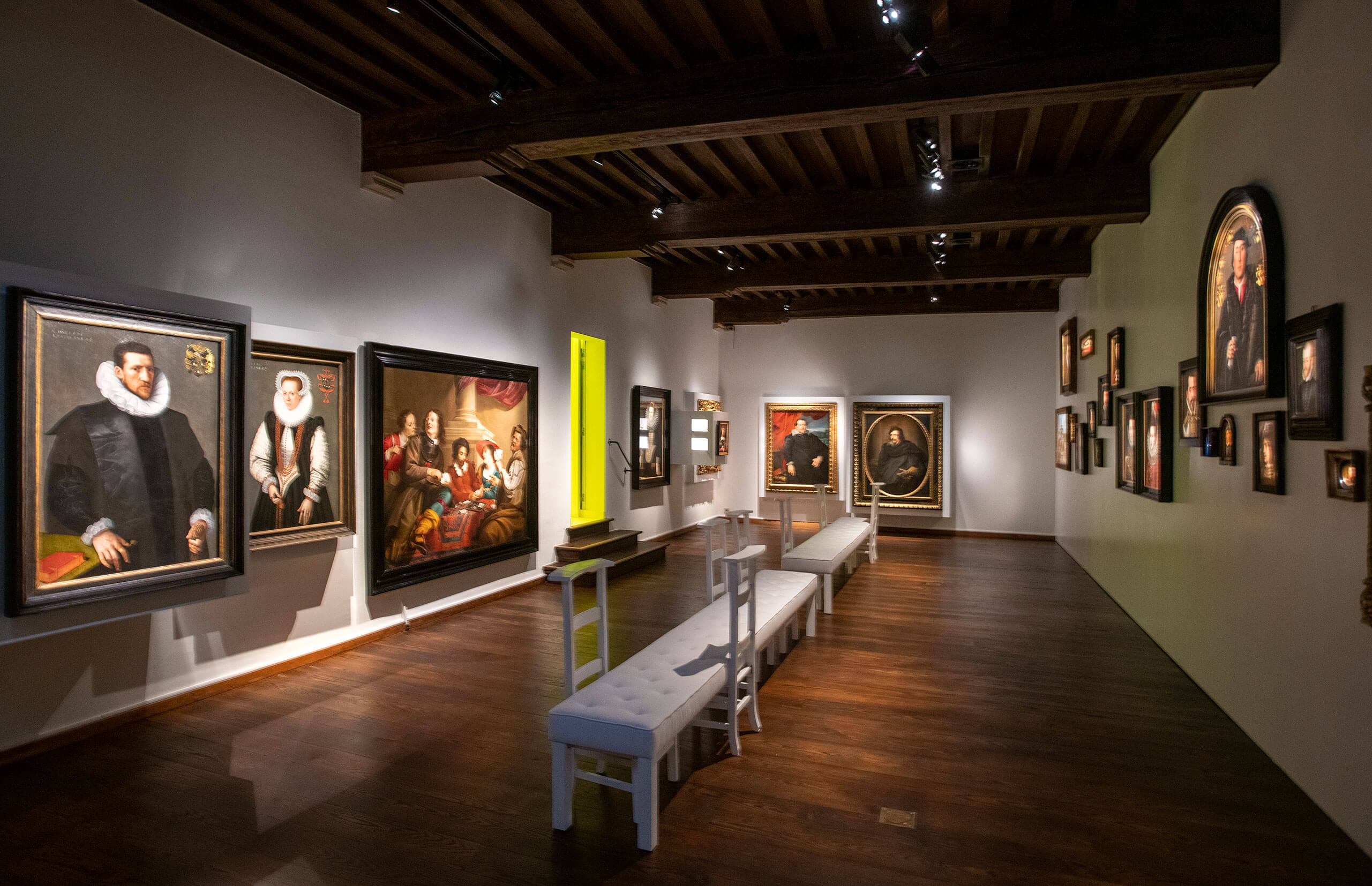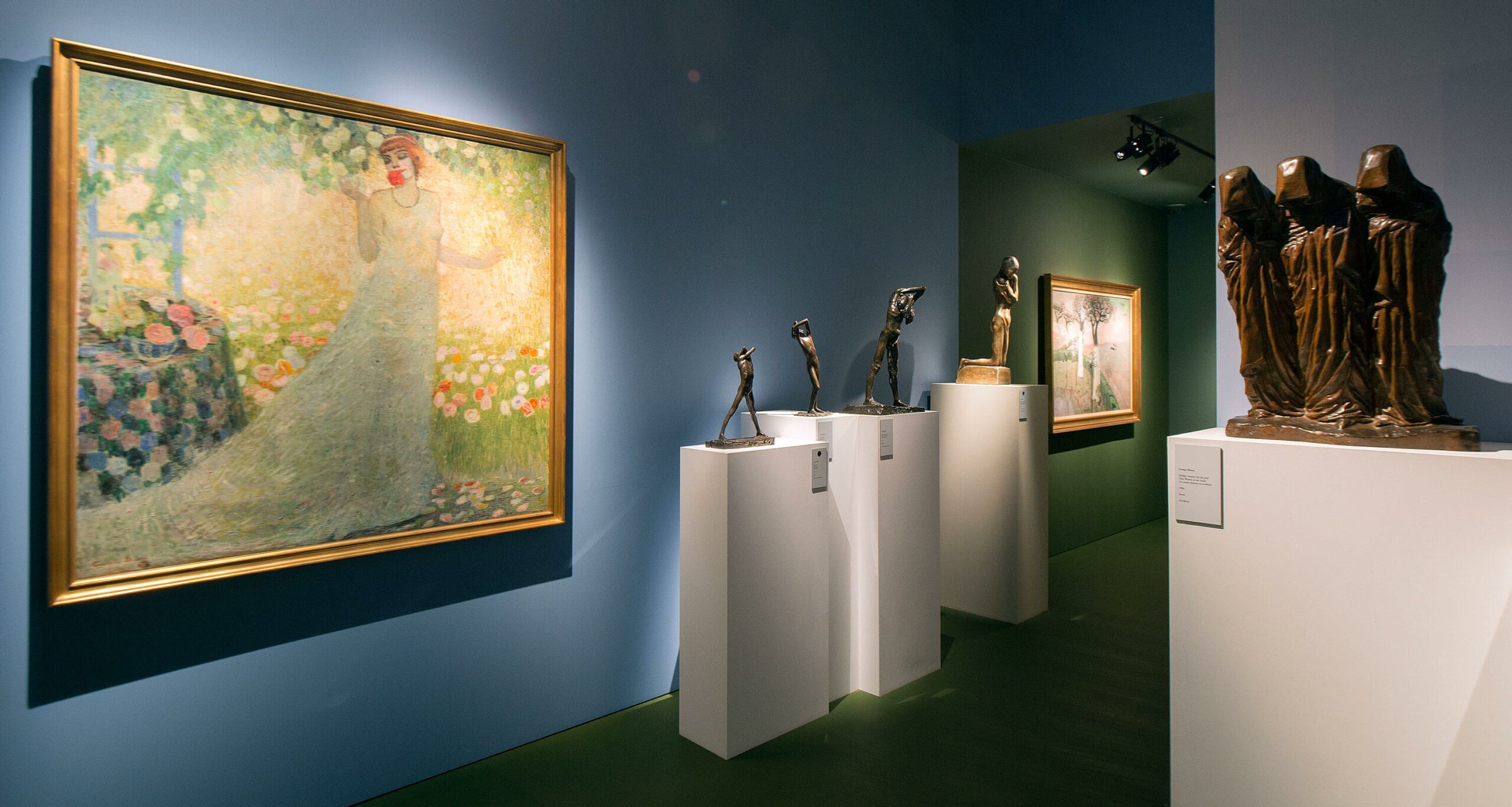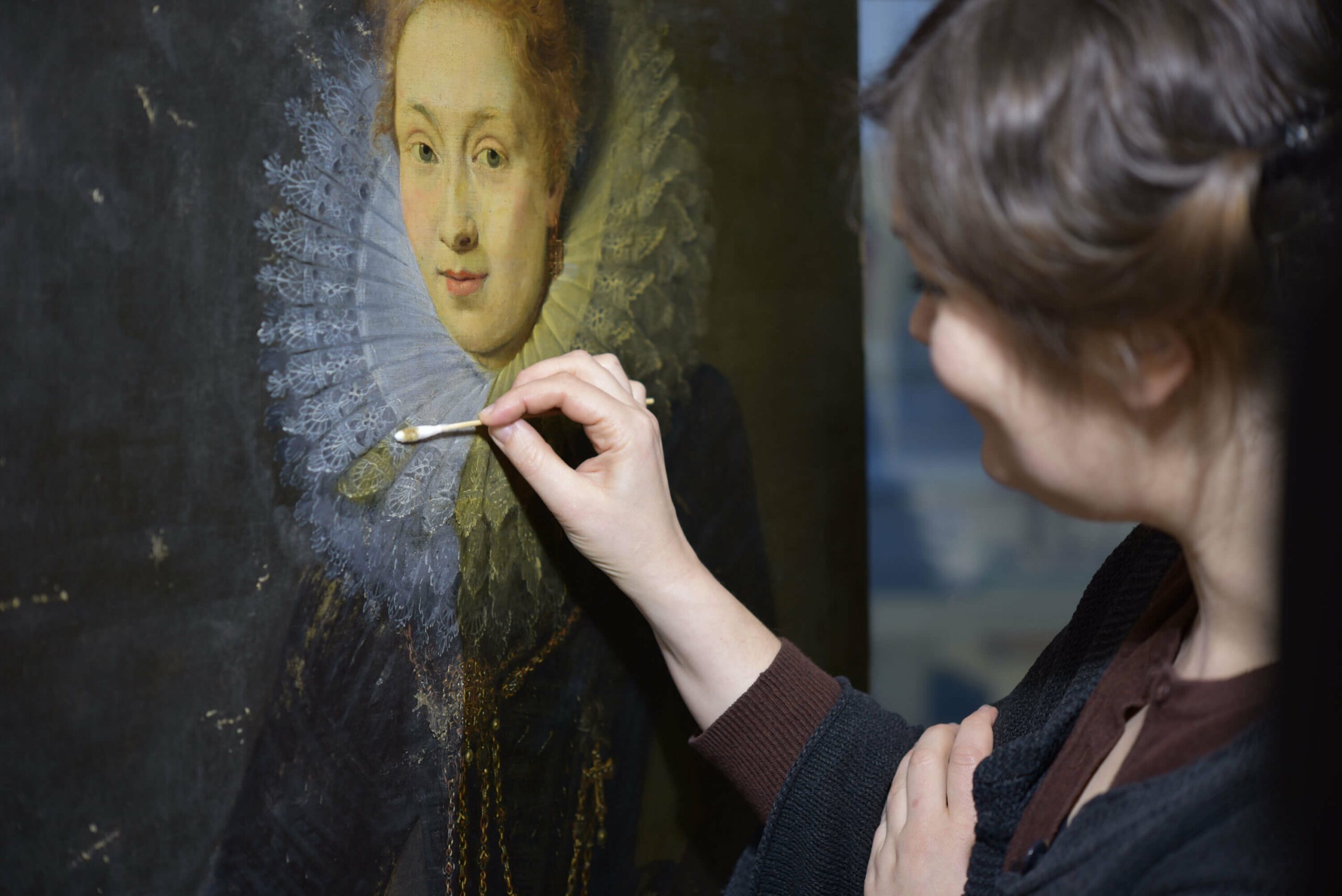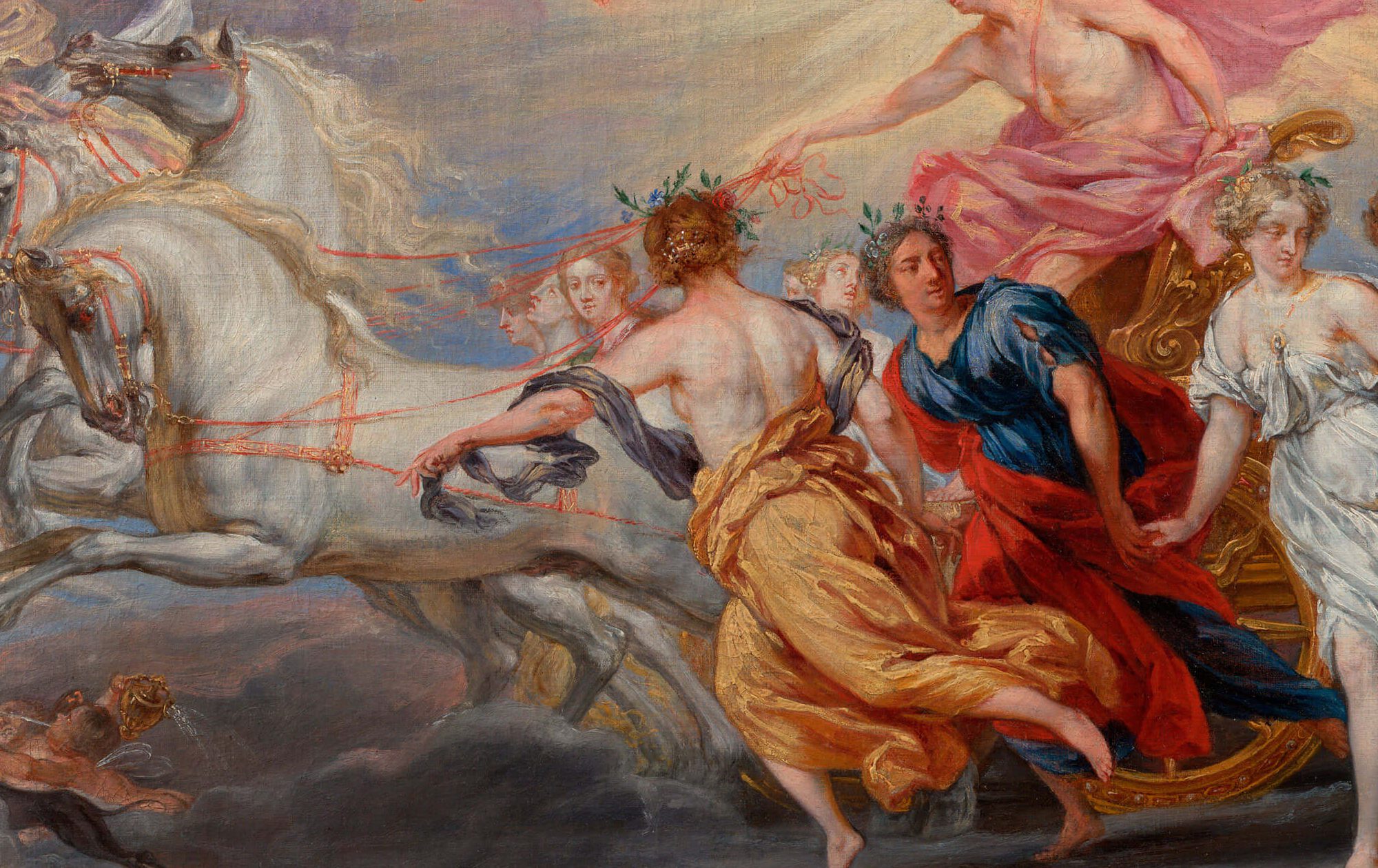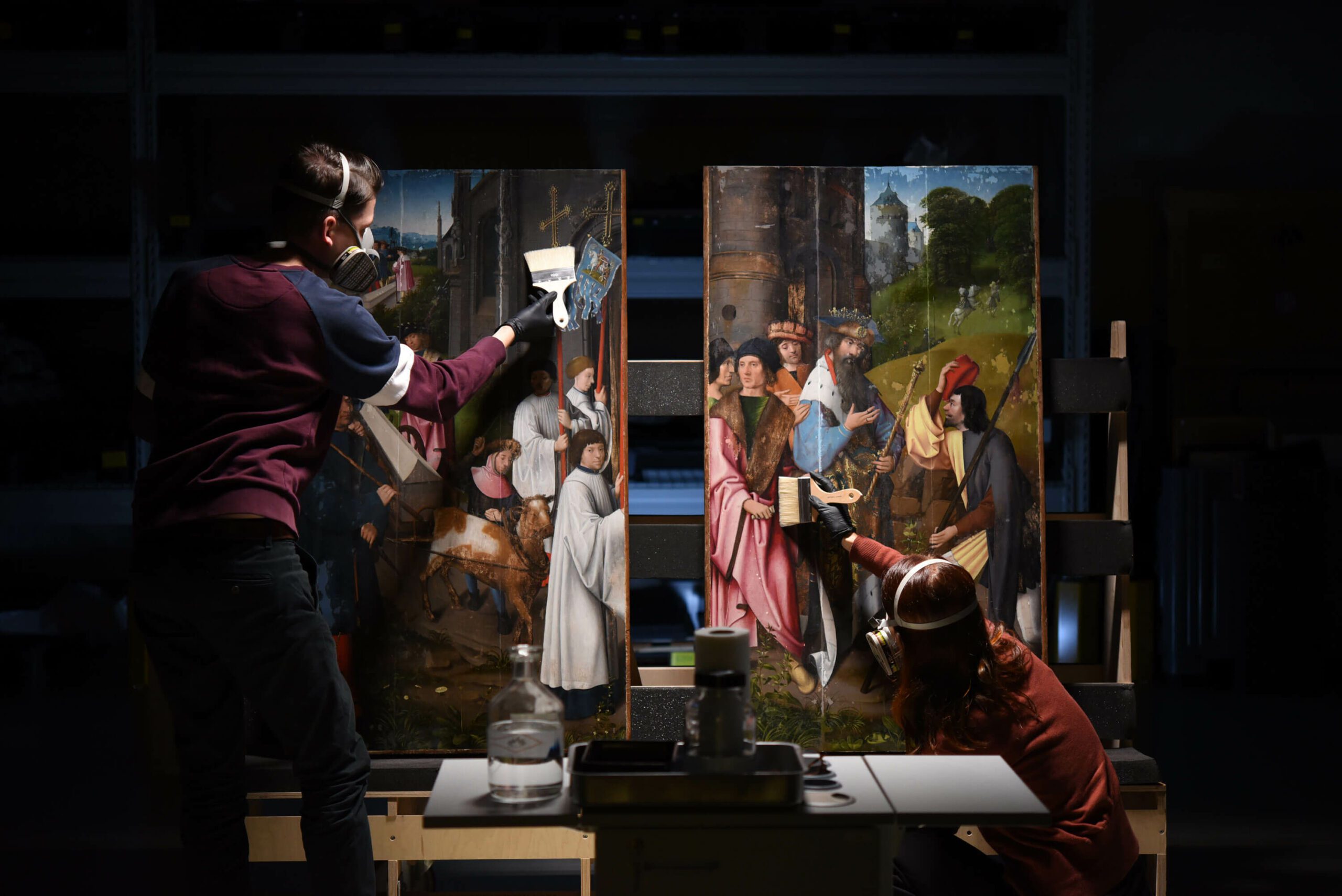From the middle ages to the baroque
Art of the Southern Netherlands
This collection of homegrown art mainly emphasises painting and sculpture, yet also features manuscripts, prints, drawings and decorative objects. Its focus lies firmly on art from the 15th, 16th and 17th centuries, with protagonists of the calibre of Hugo Van der Goes, Hans Memling, Gerard David, Jan Gossaert, Pieter Bruegel, Maerten De Vos, Michaelina Wautier as well as the great Antwerp trio consisting of Peter Paul Rubens, Anthony Van Dyck and Jacob Jordaens.
Flanders
Lace
Lace is intrinsically intertwined with the history of Flanders. Lace objects are often precious family heirlooms, preserved and passed on from generation to generation. Nowhere in the world do they have such a unique character as in Flanders. The Phoebus Foundation’s Lace collection, with over one hundred pieces, offers an overview of this luxury product. From so-called “Van Dyck passements” and “Reticella fragments” to exceptional bridal veils and unique pieces of War Lace.
16th century
Reynaert the Fox
The Phoebus Foundation owns more than 500 books about the medieval animal tale Reynaert the Fox. Starting from the oldest printed books, dating from the early 16th century, this wide-ranging collection covers five centuries of history of literature.
Topography & cartography
Topography and cartography
This collection consists of more than four hundred maps, atlases and city views from the 16th, 17th, 18th and 19th centuries. High points are the precious atlases by the first cartographers in our region: Gerard Mercator, Abraham Ortelius, Jodocus Hondius, and Petrus Kaerius. Exceptionally rare is the fully hand coloured Atlas Maior by Willem Jansz Blaeu. This series of 11 volumes contains no less than 592 maps and is on record as the most expensive book published in the 17th century.
Colonial
Colonial art from Latin America
The collection of colonial art from the New World bridges the gap between the collection of homegrown Old Masters and the collection of 20th-century Latin American art. From the port of Antwerp, tons of engravings and paintings were shipped to the New World and were gradually assimilated in the traditional local imagery. The result, a mix of visual cultures, illustrates this pivotal moment in history.
20th century
Latin American art
The Phoebus Foundation owns the largest collection of Latin American art in Europe, which comprises masterpieces from amongst others Uruguay, Brazil, Argentina, Cuba and Mexico, by famous artists such as Joaquín Torres García, José Gurvich, Julio Alpuy, Antonio Berni, Marcia Schvartz and Wifredo Lam. Some key works from this collection date from the interbellum, so the currents represented here are mainly constructivism and surrealism. The search for identity is a recurring theme in many of these works.
3500 years
Ancient textiles
The collection of ancient textiles is quite simply unique. This subcollection comprises some two thousand textiles and archaeological artefacts from ancient Egypt, supplemented with textiles discovered along the Silk Road in Central Asia.
This collection is shown at the permanent exhibition 3500 years of textile art at HeadquARTers (Antwerp). It takes the visitor on a journey through the history of Egypt, with, from the pharaonic period, linen cloths, animal mummies and fragments of painted cartonnage as well as fragments of Books of the Dead, mounted on linen. From the Roman period, besides some unique fabrics, Roman glasswork, death masks and a number of quite impressive sculptures are on display. The so-called ‘Coptic’ textiles — colourful figurative fabrics — date from the late Roman and early Byzantine period in Egypt. Also highlighted are the Arabic and Central-Asian influences on Egyptian textiles.
CoBrA
CoBrA
The Phoebus Foundation owns one of the largest collections of CoBrA art worldwide, which focuses mainly on the origins and early years of this artistic movement, featuring Karel Appel, Pierre Alechinsky, Corneille, Asger Jorn, Carl-Henning Pedersen and Christian Dotremont. The collection is quite diverse and does not consist exclusively of paintings, but includes engravings, sculptures and items of applied arts, such as carpets and furniture.
Singelberg
Contemporary Art
At Singelberg Sculpture Park, in the port of Antwerp on the left bank of the river Scheldt, The Phoebus Foundation exhibits works by the British artist Sophie Ryder, Pablo Atchugarry from Uruguay, the Dutch Atelier Van Lieshout and home-grown artists such as Michaël Aerts, Hubert Minnebo and Wim Delvoye. In 2018, The Phoebus Foundation acquired a substantial number of sculptures from the former Brussels Airport collection, including works by prominent artists such as George Grard, Jean-Michel Folon, Paul Van Hoeydonck, Jef Van Tuerenhout and Panamarenko.
Period 1880 – 1930
Belgian art
Homegrown
This collection is mainly about the impressionist and symbolist artists from Sint-Martens-Latem, such as Emile Claus, Gustave Van de Woestyne, Valerius De Saedeleer and George Minne. It also includes works by expressionist painters like Gust. De Smet, Constant Permeke and Frits Van den Berghe. The collection also contains works by Rik Wouters, James Ensor, Jules Schmalzigaug, Floris and Oscar Jespers, Edgard Tytgat, René Magritte, Paul Delvaux and Marcel Broodthaers.
